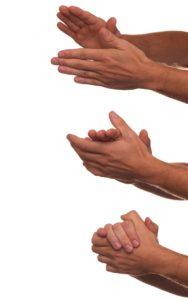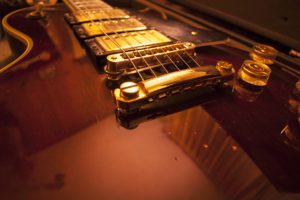Estimated reading time 4 minutes
Table of Contents
Introduction
Have you ever asked yourself, “Should I learn to play the piano one hand at a time or simultaneously?” The answer to this question might surprise you. Read more to find out the practice strategies used by the most effective practicers.
This post deals with the question of whether you should learn to play the piano one hand at a time or simultaneously. Also, it discusses the general question of how to practice effectively. However, if you want specific tips on how to successfully play hands together, see:
This article uses music terms. For definitions, see the Glossary at the end of the post.

Should I Learn to Play the Piano One Hand at a Time or Simultaneously: Effective Practice Strategies
Dr. Noa Kageyama, in 8 Things Top Practicers Do Differently, says that one of the most important practice strategies is to play with hands together.
Does this contradict what I said in the post How Does Your Brain Learn to Play the Piano with Two Hands? Should you learn to play the piano one hand at a time before playing hands simultaneously? As you read, you’ll see that the answer will be a nuanced one.
Kageyama quotes the piano performance research study by Robert Duke at The University of Texas. The study looked at the practice strategies for a group of music college pianists. The study’s list of top practice strategies:
- “Playing was hands-together early in practice.”
- “Practice was with inflection early on…”
- “Practice was thoughtful, as evidenced by silent pauses while looking at the music, singing/humming, making notes on the page, or expressing verbal ’ah-ha’s.”
- “Errors were preempted by stopping in anticipation of mistakes.”
- “Errors were addressed immediately when they appeared.”
- “The precise location and source of each error was identified accurately, rehearsed, and corrected.”
- “Tempo of individual performance trials was varied systematically… e.g. slowed things down to get tricky sections correct…”
- “Target passages were repeated until the error was corrected and the passage was stabilized…”
Should I Learn to Play the Piano One Hand at a Time or Simultaneously: The Most Effective Practice Strategies
So, “… hand-together early in practice…” doesn’t mean that you don’t do hands separate work. Rather, it means you don’t delay transitioning to hands together work. It’s not an either/or question.
For example, when working on a piece, you would start with a small section, say a bar of music.
- Work on the right hand, then the left hand, then both hands together.
- After this, work on the next bar using the same process.
- Then, you string the two bars together. Rinse and repeat.
Kageyama goes on to state: “The top performers utilized a variety of error-correction methods, such as playing with one hand alone, or playing just part of the excerpt, but there was one strategy that seemed to be the most impactful. Strategically slowing things down.”
- Should you learn to play the piano one hand at a time or simultaneously?
- The top practicers didn’t all go straight to playing hands together.
- However, they all slowed things down to correct errors.
- Kageyama asserts, “Of the eight strategies above, there were three that were used by all three top pianists, but rarely utilized by the others. In fact, only two other pianists (ranked #4 and #6) used more than one…”
And the most effective practice strategies? Numbers 6 – 8. Even though playing hands together topped the list, identifying and correcting errors, slowing down tempos, and repeating until the passage “stabilized” got employed by five of the top six practicers.

Concluding Thoughts to “Should I Learn to Play the Piano One Hand at a Time or Simultaneously?”
Kageyama states, “…the most striking difference between the top three pianists and the rest, was how they handled mistakes.”
The best practicers didn’t have an easier time learning or made less mistakes. Rather, they corrected their mistakes quickly so that they didn’t repeat them.
As you work on playing the piano one hand at a time then transitioning to playing hands simultaneously, you need to correct mistakes quickly.
You do this by slowing down, correcting errors, then repeating until you’ve got it. Within this context, you can bounce between playing hands separate and hands together.
Related Content:
- How Does Your Brain Learn to Play the Piano with Two Hands?
- Ways Around the Difficulty of Playing the Piano Due to Short Fingers and Small Hands
- How to Overcome the Fear of Performing in Front of an Audience
- Why It’s So Hard for Someone with a Good Ear to Learn Sheet Music
- Why Do Minor Keys Sound Sad to Me?
- Do I Really Have to Learn Music Theory to Learn How to Play Piano?
- Why Do Pianists Occasionally Play Their Hands at Different Times as They Perform
- What Are the Small “>” Signs Above or Below the Notes?
- After They Can Sight-Read What’s Left for Musicians to Learn?
© 2023 Geoffrey Keith
Join me for in-person or online lessons today!
Back to the All-Purpose Music Tips and Topics category blogs page
Glossary
Color Coded Quarter Note Clapping
Do you have a hard time reading rhythm notation? (Or are you a teacher who has students that struggle with rhythm?) This remains a common issue with many musicians, but especially with LD, ADD, and special needs students. Read more to learn color coded quarter note clapping. Estimated reading time 4 minutes.
Read MoreHow to Tune Like a Rock Star
How you tune affects how you sound. We look at how Keith Richards tunes his special open G tuning. The post includes video interviews with Keith Richards. Learn how to tune like a rock star! Estimated reading time 3 minutes.
Read MoreSong Structure, Musical Phrases, Musical Structures and Forms
Do you want to know how song structure, musical phrases, musical structures and forms work? Musical structures and forms in instrumental music works differently than popular song structure. However, motifs and musical phrases works pretty much the same in either type of writing. In this post, we’ll talk about all that plus the difference between motifs and leitmotifs. Read more to get music structure examples for both songwriting and instrumental music. Estimated reading time 5 minutes.
Read MoreExplore Bach’s Epic Orchestral Music in Less Than Four Minutes
Would you like to explore Johann Sebastian Bach’s instrumental music but don’t have a lot of time to spend doing it? Bach is one of the most celebrated composers in classical music. He’s best known for writing delightfully complex polyphonic music. Keep reading to explore Bach’s epic orchestral music in less than four minutes. Estimated reading time 3 minutes.
Read More




